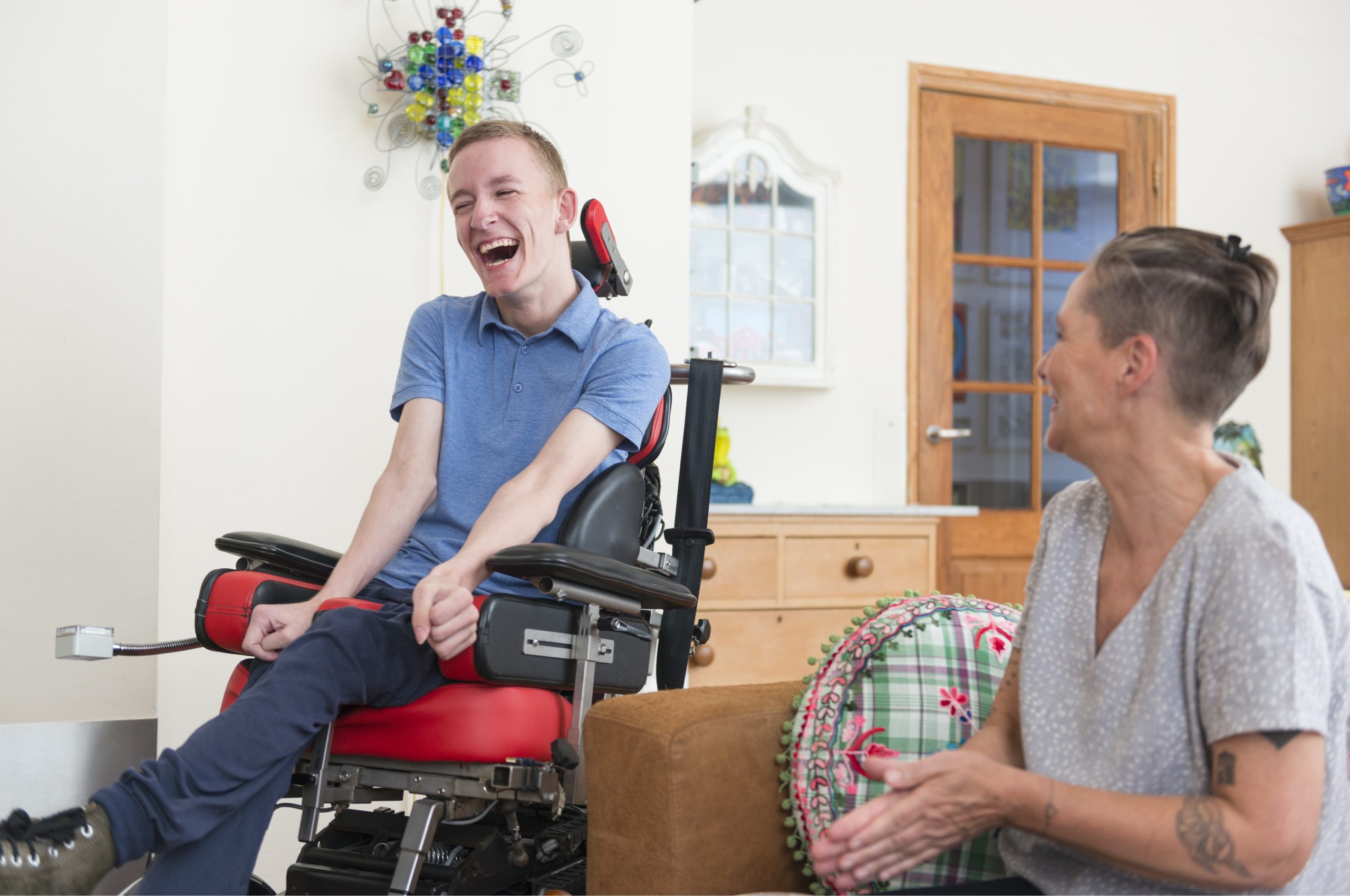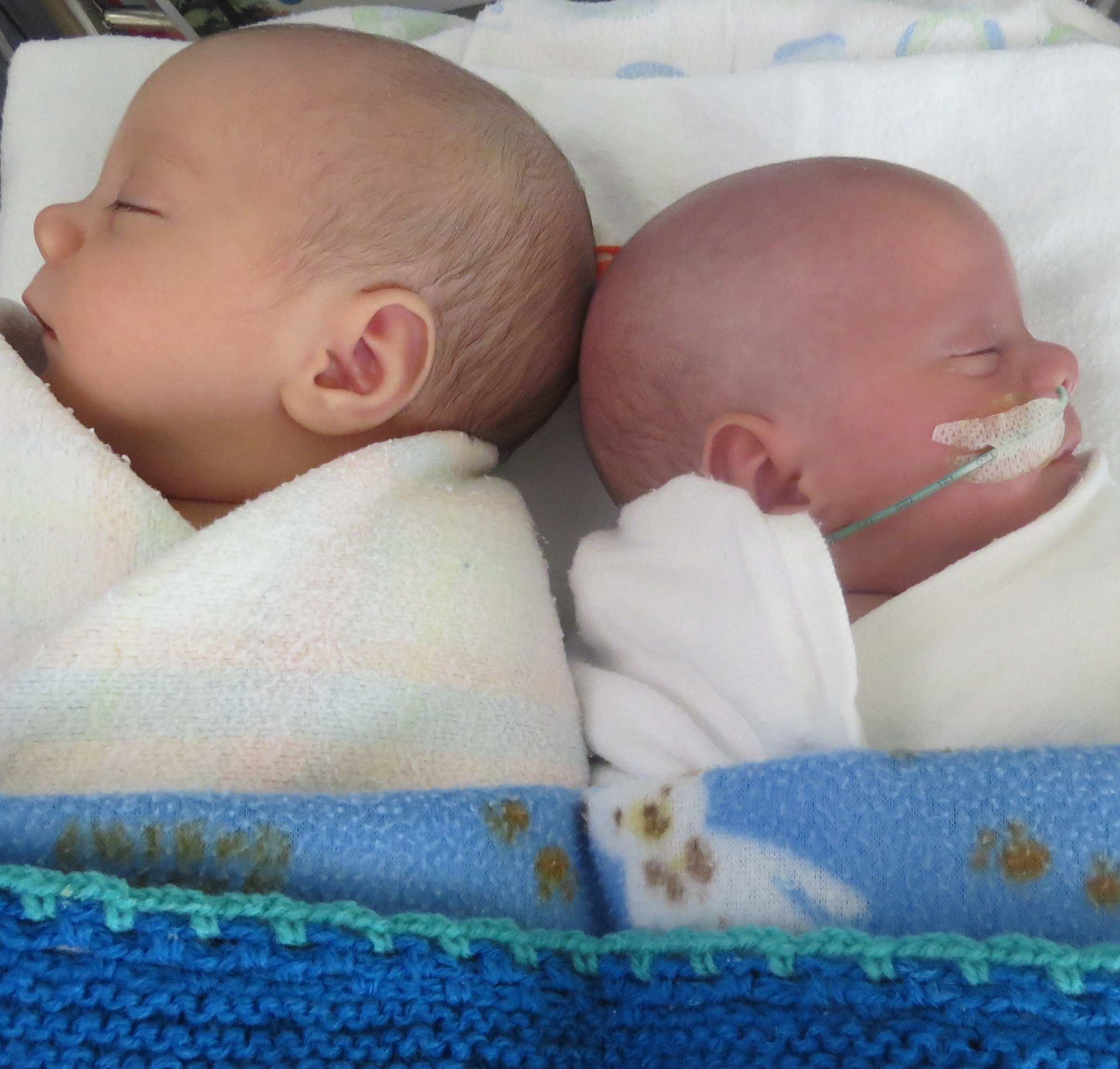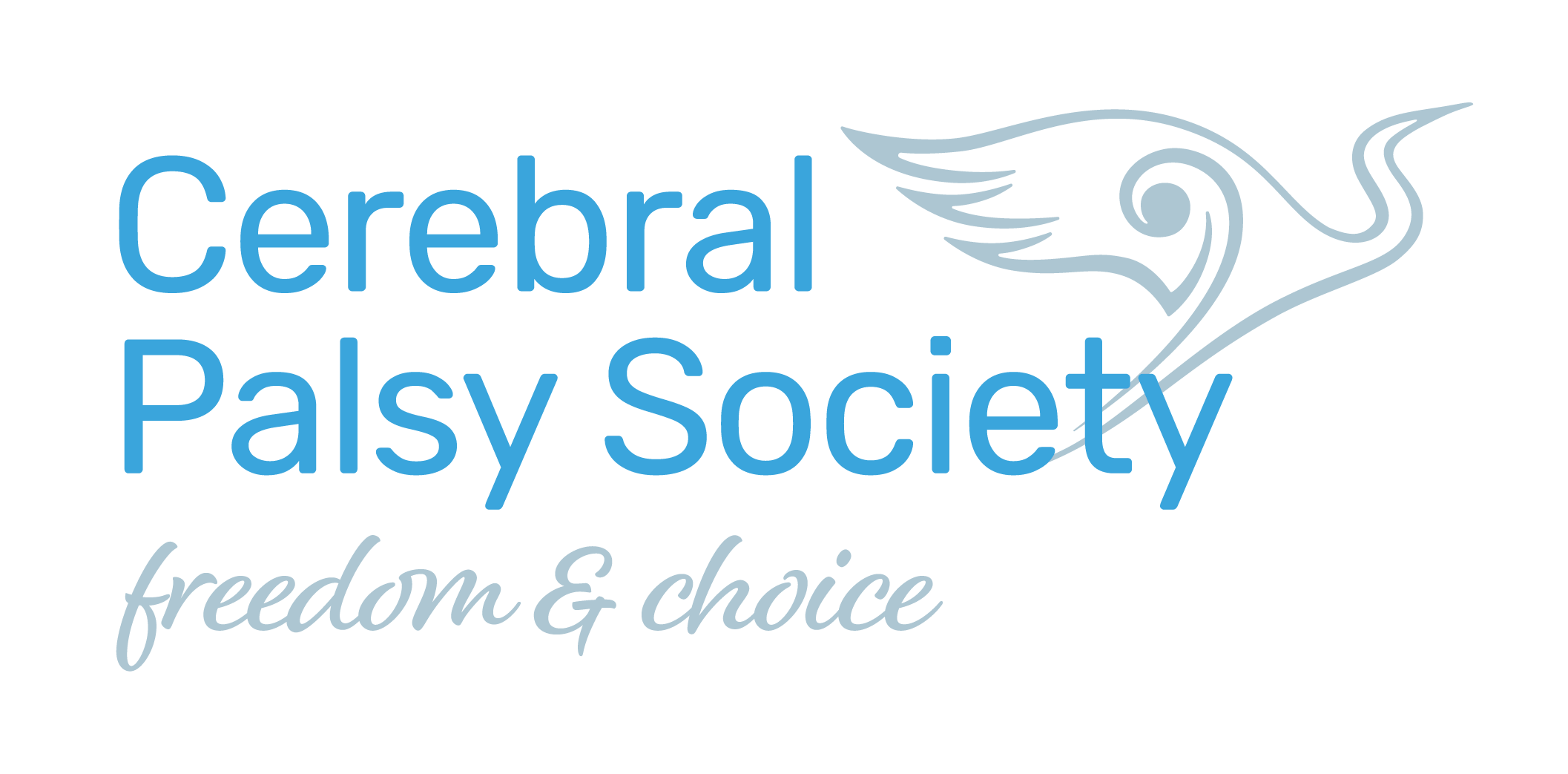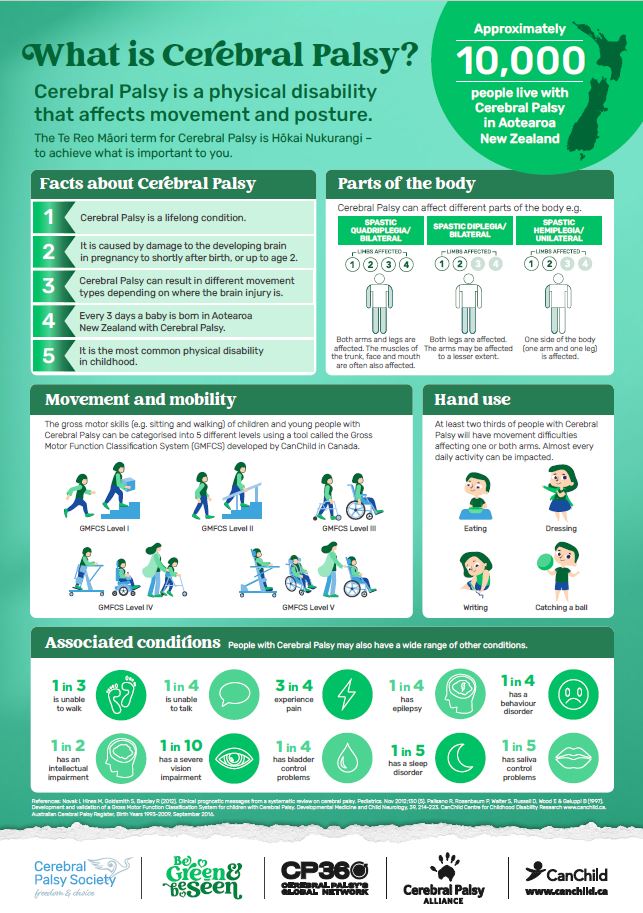About Cerebral Palsy
Cerebral Palsy – Hōkai Nukurangi is a physical disability that affects movement and posture. It is an umbrella term that refers to a group of disorders affecting a person’s ability to move.
- People with Cerebral Palsy (CP) – Hōkai Nukurangi can live happy and fulfilling lives
- Every person living with Cerebral Palsy is unique in their abilities
- Cerebral Palsy is complex, with varying effects
- Cerebral Palsy is NOT infectious
- Cerebral Palsy is NOT a disease, it is a disorder.

What is Cerebral Palsy – Hōkai Nukurangi?
Cerebral Palsy is a lifelong condition and refers to a group of permanent conditions caused by a disturbance or insult to the brain during development.
The way Cerebral Palsy impacts each person’s movement, and posture (how they sit and stand) is different and can depend on when the brain disturbance occurred, and which parts of the brain are affected.
People living with Cerebral Palsy can have difficulty with everyday movements, such as sitting, standing, walking or using their hands in everyday tasks. They may have other medical conditions, including epilepsy, and/or difficulties with seeing, learning, or talking.
What is the cause of Cerebral Palsy – Hōkai Nukurangi?
There is no one cause of all Cerebral Palsy. There are many possible causes, risk factors and/or events that can lead to a diagnosis of Cerebral Palsy.
The disturbance or interference to the development of the infant brain mainly occurs during pregnancy, birth or very soon after birth (for approximately 9 out of 10 people with Cerebral Palsy).
The term Cerebral Palsy also includes when the brain disturbance occurs later – between one month and two years of age (for approximately 1 out of 10 of people with Cerebral Palsy).
Sometimes the exact cause leading to Cerebral Palsy is unknown.
For all types of Cerebral Palsy, the initial disturbance or insult to the brain does not progress over time. However, the impact on a person’s physical and functional abilities can change across the lifespan.

Risk Factors associated with events leading to Cerebral Palsy – Hōkai Nukurangi
These risk factors do not cause Cerebral Palsy, but can lead to an increased chance of an infant being diagnosed with it.
Examples of pregnancy risk factors:
- Maternal infections or virus (e.g. Rubella aka German measles)
- Maternal diabetes, hyperthyroidism or high blood pressure
- Toxicity (drug or alcohol use during pregnancy)
- Multiple births

Examples of birth related risk factors:
- Born prematurely
- Born too small (growth restriction in pregnancy)
- Admitted to neonatal intensive care unit
- Born with neonatal encephalopathy (presence of seizures)
- Born with birth defects of brain, heart or limbs
- Low sugars at birth
- Jaundice at / after birth
- Born with an infection or receiving an infection soon after birth
- Head injury for the infant (after birth until 2 years of age)
Cerebral Palsy – Hōkai Nukurangi fact sheet
Click here for a fact sheet that you can download and share with friends and whānau.
Cerebral Palsy – Hōkai Nukurangi in Aotearoa New Zealand
The te Reo Māori term for Cerebral Palsy is Hōkai Nukurangi – to achieve what is important to you. The term was developed by linguist and educator Matua Keri Opai. You can learn more about the term here.
In New Zealand:
- Cerebral Palsy is the most common physical disability in childhood
- It occurs in approximately 1 in every 500-600 babies born
- A baby is born with Cerebral Palsy every 3 days
- It is estimated that there are up to 10,000 people living with it.
Key New Zealand sources of information on Cerebral Palsy
|
Kidshealth NZ |
Information for New Zealand whānau about the health and wellbeing of children/tamariki. |
|
Healthify – formerly Health Navigator |
Service and resource information on living with Cerebral Palsy in Aotearoa New Zealand. |
|
NZ Cerebral Palsy Register (NZCPR), Te Rēhita a Hōkai Nukurangi Aotearoa |
The register collates information on Cerebral Palsy in Aotearoa New Zealand, used to assist advocacy, health planning and research. Participation is voluntary. |
Overseas sites with good information on Cerebral Palsy
|
My CP Guide (Australia) |
For people with lived experience of Cerebral Palsy. |
|
CP Alliance (Australia) |
An organisation that provides therapy and supports research related to Cerebral Palsy. |
|
Canchild (Canada) |
An organisation that supports research and innovation on Cerebral Palsy. |
|
CP Foundation (USA) |
Information for families, and health professionals. |
|
Turnto |
The Turnto app gathers the latest research, lived experiences, tips, and insights into Cerebral Palsy. |


